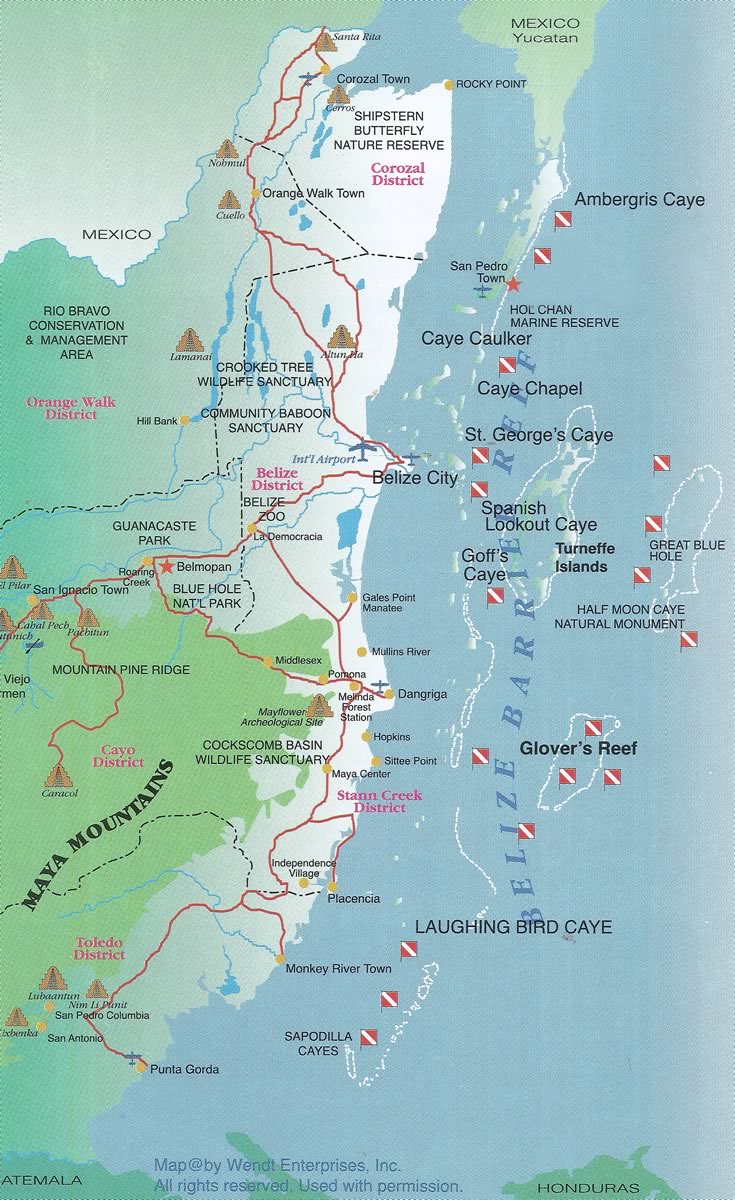Belize Barrier Reef
The barrier reef and coastal systems of Belize is approximately 185 miles long, the largest in the northern hemisphere. It includes three of four coral atolls found in the northwest Caribbean, as well as hundreds of small islands; naturally, this makes for an amazing underwater experience for visitors.
This great barrier reef along with the atolls of Glovers Reef, Turneffe and Lighthouse Reef (home of the Great Blue Hole) are some of the most diverse Eco systems in the world. Divers and snorkelers will find paradise in Belize’s coastal areas. These areas are a haven for over five hundred species of fish and coral as well as invertebrates. Many threatened species, including marine turtles and manatees, also live here.

Marine Protected Areas
UNESCO inscribed the Belize Barrier Reef Reserve as a World Heritage Site in 1996. It features supelative natural phenomena and natural beauty, ongoing ecological and biological processes, and biological diversity.
The seven protected areas that comprise the World Heritage Site are: Bacalar Chico, National Park and Marine Reserve, Blue Hole Natural Monument, Half Moon Caye Natural Monument, Glover’s Reef Marine Reserve, South Water Caye Marine Reserve, Laughing Bird Caye National Park, and the Sapodilla Cayes Marine Reserve. The protected areas now also include The Gladden Spit and Silk Cayes.
World Heritage Sites
In order to increase the international awareness of threats the Belize Barrier Reef Reserve System was placed on the list of endangered World Heritage Sites in 2009. Several recommendations were made, and corrective measures were identified that continue to be implemented. The consequences of losing such biodiversity are great. Through responsible travel, visitors can continue to enjoy this natural wonder, and participate in efforts to protect the site.
Charles Darwin didn’t actually visit Belize reef, but after talking to other naturalists who had, he described it as the most remarkable reef in the West Indies; in his 1842 book Coral Reefs of the World.